Hidden amidst the towering peaks of the Upper Hunza region is an incredible plateau, wedged between two enormous glaciers. The Patundas ridge is in effect a shepherd’s meadow but it is so much more. Surrounded by the Passu Glacier on one side and the mighty Batura Glacier on the other flank, Patundas offers some of the most incredible glacier views in Pakistan.

The three-day expedition begins by crossing the Passu Glacier before climbing up the ridge to reach Patundas Camp (4,300m). From the camp, it is possible to explore further up the ridge towards Passu Peak, where we reached 4800m of elevation.
BEST TRAVEL COMPANY FOR PAKISTAN

Interested in traveling to Pakistan or doing the K2 Base Camp Trek?
I recommend joining an Epic Expeditions trip for all things Pakistan adventure travel. Use code ‘JACKSON5’ when booking for a 5% discount.
PATUNDAS TREK IN UPPER HUNZA
In this blog post, I will share with you all of the details about this 3-day trek including distances, campsites, guides, costs, locations, and also a full description of my experience with photos included.

PATUNDAS 3-DAY TREK DETAILS
- Trek Distance: The total distance of the trek was 29 kilometers including our adventure up the ridge past Patundas Camp One.
- Trek Duration: This trek can be done in one day but it would be very difficult given the incline. I think the best duration is three days as we did. This means you can camp at Patundas Lower Camp just across the Passu Glacier on day one. Then do the steep climb to Patundas Camp One in the morning. In the afternoon of day two, we adventured up the ridge for sunrise and then stayed back at Patundas Camp One. On day three, we headed back down to Patundas Lower Camp in just over an hour before crossing the glacier and reaching back to our starting point.
- Trek Difficulty: This trek needs to be done with a guide. Crossing the glacier is simply not possible without the local knowledge of the guides. The incline of 2000m in just two days will also push many people to their limits. The terrain is rocky, gravel, glacier, and grass throughout the journey without any technical elements other than the glacier.
- Trek Incline: 2,177m total elevation although if you just went up to Patundas Camp One and back down the total elevation would be just 1600m.
- Strava Map Upload: Patundas 3-Day Trekking

WHERE IS THE PATUNDAS TREK
The Patundas Meadows Trek starts near Borath Lake, which is in-between Ghulkin Village and Passu Village. My accommodation before the trek was at a local homestay in Ghulkin Village and then we had a 30-minute drive to the trailhead, just beyond Borath Lake. To reach this region, we flew from Islamabad to Gilgit on a one-hour flight and then drove a couple of hours to reach Ghulkin.

INSURANCE FOR THE PATUNDAS TREK
Pakistan is a precarious place for climbing or hiking because the availability of helicopter rescue is almost non-existent. Compared to places like Nepal, helicopter rescue requires prior organization and deposits of $5000+ by your trekking or climbing company. There is a solution though.
Need extra protection?

Regular travel insurance is great but won’t cover you for high altitude hikes or for helicopter evacuation. Each year, I purchase a Global Rescue Subscription.
For less than $500 per year or $100 per expedition, you can purchase a Global Rescue subscription and be covered no matter how extreme the hike or how high the climb is.
BOOKING A GUIDE
Our guide was organized while in Ghulkin Village. There are only about 2000 residents in Ghulkin Village so it’s safe to say everyone knows everyone. We were set up with a local guide called Hassan, who then, in turn, organized a small team of one more porter and one cook to join us on the expedition. I’ve added Hassan’s Whatsapp number below, but it is highly probable you can arrive at Ghulkin and organize your trek within 24-48 hours with no prior organization.
Hassan’s Phone Number: +92 355 5328658

PATUNDAS TREK COSTS
Our trek was with a group of three and we employed two porters and a cook. The total cost of the three-day trek is actually super affordable. We paid a total of 30,000 Pakistani Rupees, which is equivalent to $180 USD. Split between three of us this equates to just $60 USD per person for three days of trekking including all food and permits.
Compared to the $4000 cost for trekking to K2 Basecamp, this is a great budget option for hiking in Pakistan.
The only other cost involved was the transport to and from the trailhead from Ghulkin Village, which was about $30 USD but needs to be negotiated with Hassan.

MY EXPERIENCE ON THE 3-DAY PATUNDAS TREK
Day One: Our journey began in Ghulkin village, where we piled all of our gear into the Jeep and made the 30-min drive towards the trailhead. On the way, we passed the stunning Borath Lake as the Jeep bounced along the bumpy, dusty roads. We unloaded the gear and left the car in the parking lot as we began the first steps of our three-day adventure.
The first segment of the trail is commonly frequented by locals who make the 1-kilometer hike out the start of the glacier for a first-hand view. We began early so there were no crowds but on our return, we spotted more than fifty local tourists checking out the glacier along the path. Even on this early section of the trail, you have world-class views with glimpses of the glacier and the majestic Passu Cones.


What are my favorite pieces of trekking gear?
There are six pieces of gear that I simply never forget when I go trekking. These are five items that I using right now and this list gets updated every year! Here are my trekking essentials.
- Arcteryx BETA AR Rain Jacket: This is my go-to rain jacket. It’s super light, folds down into a tiny ball, and protects brilliantly in a storm. This one never leaves my backpack.
- Salomon X Ultra 3 Mid GTX Hiking Boots: For the best ankle support, waterproofing, and durable exterior I’m a fan of tough but light hiking boots like these Salomons for my adventures.
- Black Diamond Head Torch: I can’t tell you how many times, I’ve arrived back from a hike unexpectedly late. I always keep this lightweight but strong headtorch in my bag for the unexpected.
- Darn Tough Socks: These are the most comfortable hiking socks I’ve ever worn and last for years. They also have a lifetime warranty and you just send them in with a hole and they replace it no questions asked.
- Osprey Atmos AG 65L Backpack: I’ve never had a more comfortable 65L pack than this one. I got it in the Navy Blue and have trekked with it through many a mountain.
- Black Diamond Trekking Poles: They might feel weird at first, but on a long trek with incline and decline you’ll begin to love these.
- Grayl GeoPress Water Filter Bottle: I’ve used this for three years. It filters your water with one press and you can drink directly from it. Never buy a plastic water bottle again!

The trail leads you along the left side of the Passu Glacier on a rocky trail. Slowly but surely you rise alongside the Passu Glacier for incredible views of the icy formations across the expanse. Expect some early incline with a few steep hills as we grabbed five hundred meters of elevation to reach a small mountain cottage. Inside the cottage, we had a tea and snack while admiring the damage a giant boulder had inflicted onto the corner of the room.


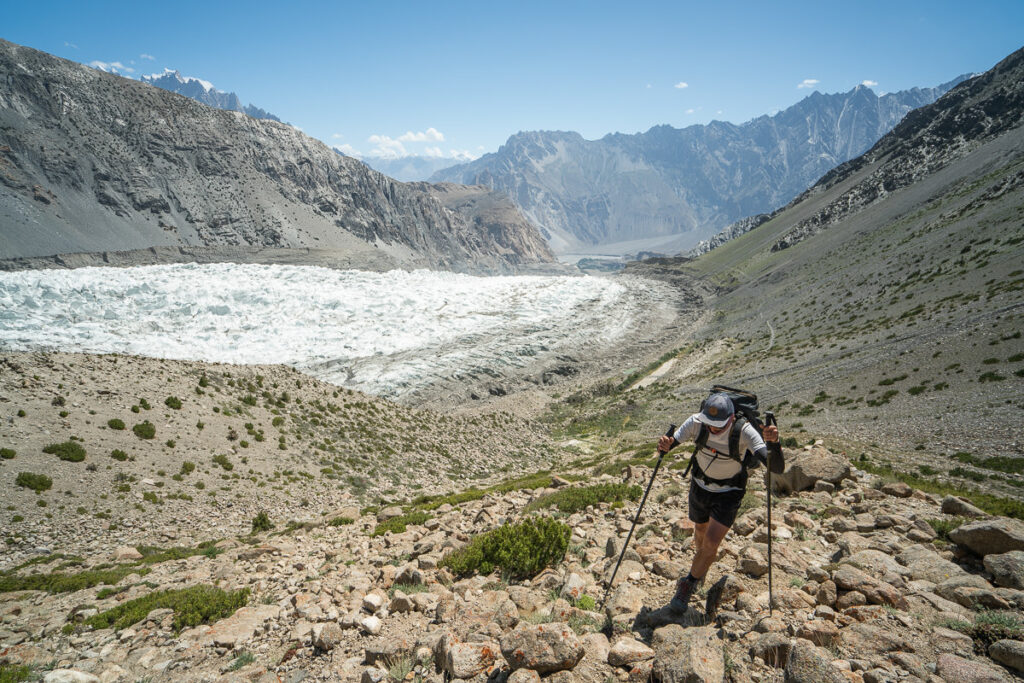
After rising further from the cottage, it was time to strap on the crampons and venture onto the precarious Passu Glacier. This is the most dangerous part of the trek and having a guide is paramount. The local guides know the route well and despite the fact that the glacier is constantly changing and evolving, they do a good job of finding a safe route to the other side. We followed their steps precisely and made our way to the center of the glacier, where there was much more room for error with wide paths of ice. The first couple hundred meters was riddled with crevasses and quite an interesting journey of winding turns.





Once off the glacier and onto the other side, we could breathe a sigh of relief. Not only because we had reached safety but also because the day of trekking was all but over as we had reached the lower camp of Patundas. We set up our tents and cooking stations ready to settle in for the night. I actually decided to leave my tent in the bag and used one of the cottages, which even held up during a bit of stormy weather overnight.
Our dinner table was made from fallen rocks and our team of guides cooked a beautiful chicken dish with chapati, of course. Day one had been an incredible adventure and we looked forward to scaling the big cliff behind us after a good night’s rest.

Day Two: We woke in our private campsite and enjoyed a peaceful breakfast before packing up camp ready for a new day of challenges. The wall directly behind the lower camp is incredibly steep and is quite the leg burner for the first activity of the morning. We climbed about 700m in just a couple of kilometers as the trail runs up a number of switchbacks. You will be at around 3500 meters of altitude and above during this climb so expect to be a bit out of breath as you crawl up the mountain. The views of the Passu Glacier get better and better with every meter of elevation you gain and it becomes possible to grasp the size of the entire glacier as its entirety comes into view.

Have you got travel Insurance?

- Don’t wait for an accident to happen… get insured! My travel insurance is SafetyWing which offers low-cost travel & medical insurance. That’s me in the photo below with three teeth knocked out after a motorbike crash in Bali
- I’ve made several successful claims with SafetyWing and find their customer service very quick and helpful.
- SafetyWing’s Essential plan covers travel and medical emergencies with options for adventure sports and electronics theft. Their Complete plan offers comprehensive health coverage with routine healthcare, mental health support, and maternity.

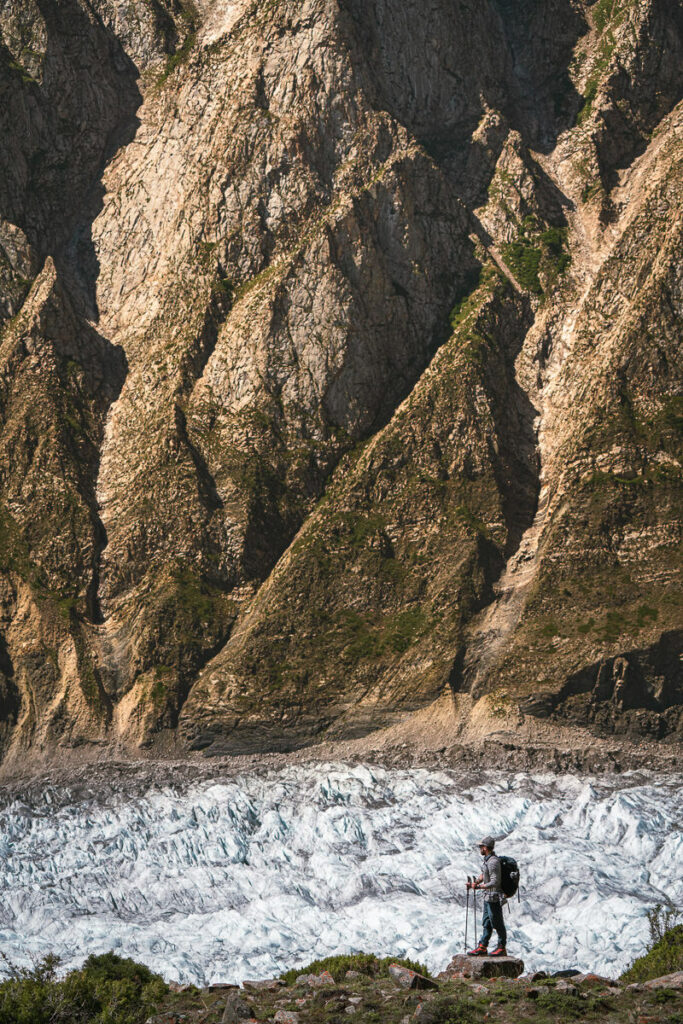


We reached the false plateau around 8 am and even spotted a few ibex who quickly ran away at the sight of us. From here we just had a 20-minute uphill hike to reach Patundas camp in the heart of the meadow.
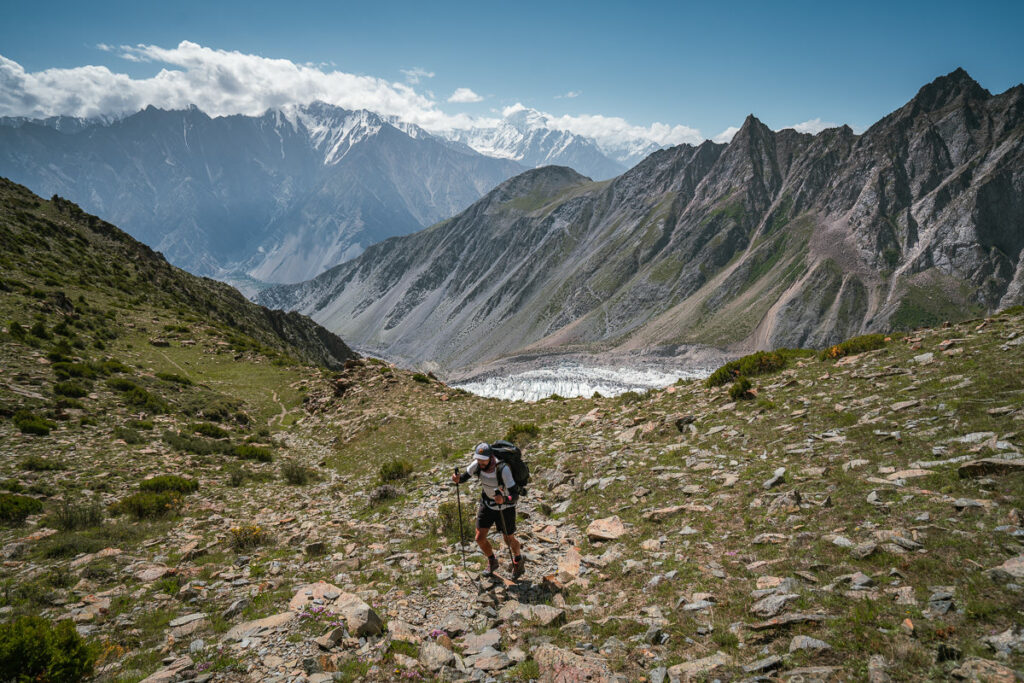
Totally blown away by the view, I was a little overwhelmed as I reached the viewpoint within Patundas Camp. Now looking to the other side of the meadow, away from Passu Glacier, there was something even more impressive. Beneath the monolithic Passu Cones is Batura Glacier, the second-largest glacier in the world. We sat in the sun, legs dangling over the edge of the viewpoint in complete awe of the amazing scenes Pakistan consistently provides.







Our plan was to set up camp and take it easy for the middle portion of the day while the sun was the strongest. The guides had to do some lengthy expeditions to a still down the cliff to fetch enough water, which we then used for drinking and cooking. We took a nap, took in the view, and prepared for a late afternoon adventure up the ridge.
At around 5 pm, two hours before sunset, we set off up the ridge in the direction of Passu Peak. This adventure would be the highlight of the entire trip but as we set off through the wide meadow, not a soul in sight. With the Passu Glacier and the Batura Glacier crowding us on either side, we marched up the ridge as our track became narrower and narrower. There is no defined viewpoint but we found a great lookout just before the track began to descend at around 4,800m. Here we had views down the Batura Glacier but we could also look down directly on Passu Glacier. All of the peaks in view, a couple of mates, and a bottle of Coca-Cola we had hiked all the way up made for an unforgettable Pakistan sunset.








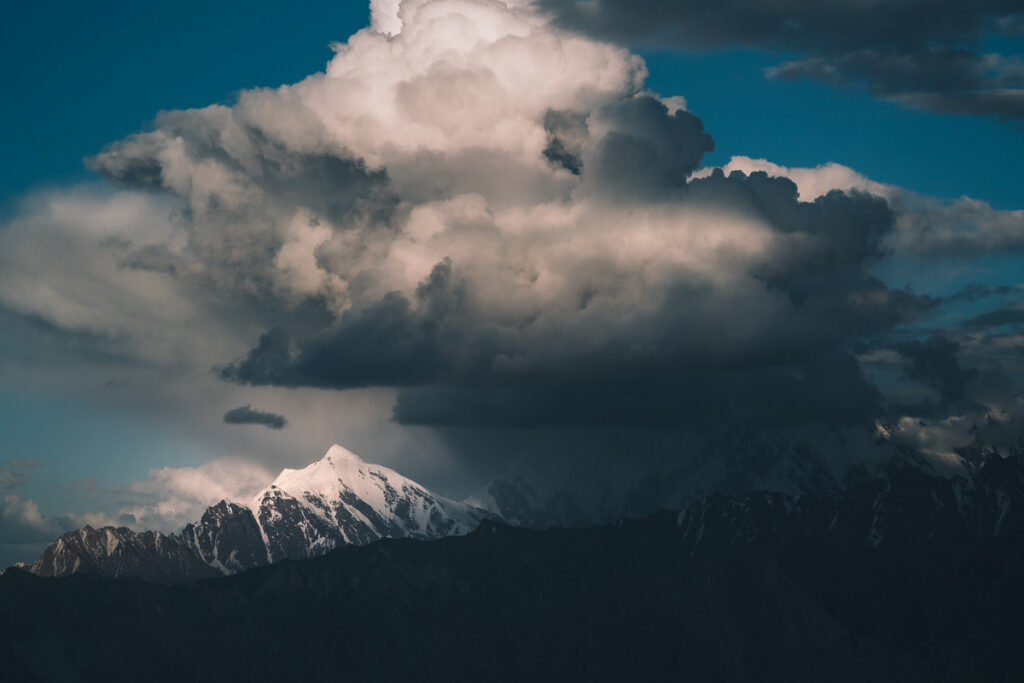


Hiking up the ridge from Patundas camp is entirely optional and makes the trek much more intensive but should be manageable for most adventurous hikers. There were no major elements of exposure when staying on the trail. We used head torches to make it back to Patundas Camp after the sun had set and then enjoyed a great dinner to cap off a memorable day two.
Day Three: After two days of adventure and incline, today was all about descending safely back to the trailhead. There were three main segments of the day. Firstly, we had a very steep downhill straight after breakfast. Secondly, we had to retrace our steps across the Passu Glacier. Thirdly, the journey back down the side of the Passu Glacier to the trailhead would cap off the adventure.
This third day was quite long and the rocky terrain had us fatiguing towards the end but having an entirely downhill run helped us reach back to the trailhead by 1 pm.
I hope you enjoyed this blog post about the Patundas Trek and it inspires you to venture to this beautiful part of the world.
Thanks for the additional photos by Chris Lininger from Off The Atlas.


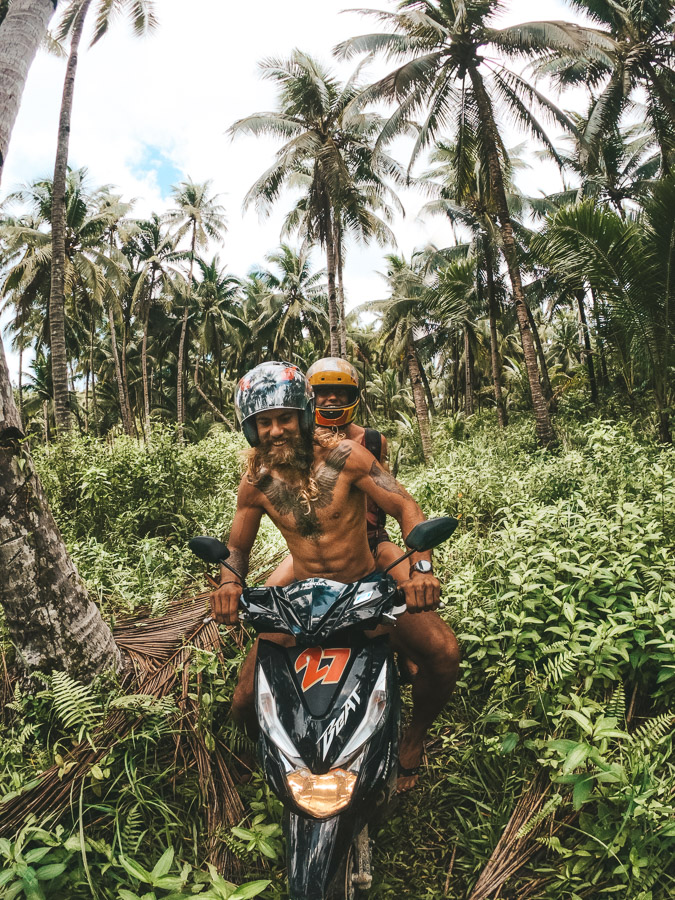
Jovie
Tuesday 22nd of April 2025
Hi. Can we hire a guide and porter at the same time? Which month did you do it?
Monday 14th of July 2025
@Jovie, yes you can hire a guide and a porter at the same time
Nicolas
Friday 26th of July 2024
What time of the yeah was this ?
Hamza
Monday 14th of July 2025
@Nicolas, Hi nicolas june to September are the best to visit patundas meadows
Attiq
Tuesday 12th of December 2023
My gratitude for your outstanding explanation of Patundas trek. Your detailed insights and vivid description truly enhanced my understanding and anticipation. Thank you for sharing your experience and expertise
Zahid
Tuesday 28th of November 2023
So nicely described the Patudas trek. I grew up in Gulkin with summer visits to Patundas with our herds of goats, sheep, and oxen. I can relate to every inch of your journey and I enjoyed it. Hope one day you come back with friends to celebrate Patundas. www.gypsytours.pk
Babbar
Monday 3rd of April 2023
Well done. Very enjoyable read. Am fond of treking and climbing. You have inspired me and about 3 others to do the Patundas trek end of beginning of May. Thank you for taking out the time to write this piece.